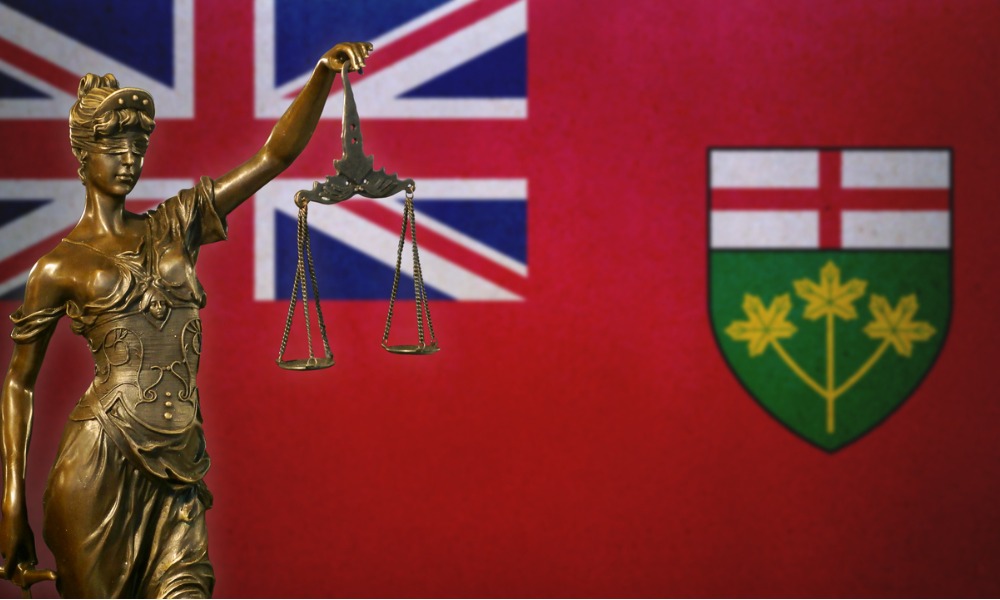Who is a worker in Ontario? The test in the province to determine who is an employee or an independent contractor under the Employment Standards Act includes certain fundamental criteria.
Who is a worker in Ontario?
The test in the province to determine who is an employee or an independent contractor under the Employment Standards Act includes certain fundamental criteria. To be considered an employee, you have to be provided with the tools and materials to work, you cannot subcontract to someone else, the business has the right to discipline you including dismissal and determines matters such as how much you will be paid and deadlines for completion of work. At least some of the criteria have to be met in order to be considered an employee. But the changing nature of work, due in large part to the rise of the gig economy, has created a need to revamp the test. Therefore, there are the questions that arise from this for companies and employees operating in Ontario and the lawyers that advise them. Questions you may encounter could include asking who an employee is and who an independent contractor is, in light of the changing nature of work. Others may ask how Ontario legislation be drafted to help protect gig workers and if there is space for extralegal tools.
In some jurisdictions, the terms “labour” and “employment” are used interchangeably. In Ontario, labour is used to denote the unionized workplace while employment is the non-unionized workplace. There is space in both labour and employment law for gig workers. Either the base level can be raised through employment law or gig workers can start to organize using labour law tools. Take Uber, for example. Platforms such as Uber allow for people to use an app on their phone to connect with people who are Uber “drivers” but not Uber employees. This is distinct from the model of taxicabs. Some taxi drivers work exclusively for a company and get the information about where to pick up passengers through a centralized dispatch or pick up passengers who hail them curbside.
In July, there was a decision by the Unemployment Insurance Appeal Board of New York State that found Uber to be operating as an employer; but this movement to recognize more obligations flowing from Uber to its “drivers” is slow. Uber was founded in 2009 and only in recent years is there movement to catch up with regulating these platforms. Also, the ability to allow Uber to operate legally is an issue at the municipal level in Canada as cities hold the authority about regulating taxi services and similar services, so Uber operates in legal limbo in many cities. The gig economy is also termed the “sharing economy,” which sounds more polite to customers but also seems inaccurate. Is your Uber driver sharing with you or simply acting as a taxicab? The underlying premise of the gig economy is that workers drive Uber on a part-time basis as a “side hustle” to a regular job. This can no longer be held to be true in all cases. Some workers get all or most of their income from the gig economy. The notion that workers are relaxing all day pursuing personal interests and only driving Uber for disposable income is untrue.
As is often the case, the law has to play catch-up to new inventions. The creation of the gig economy has resulted in a gap or delay in legislation that addresses the concerns raised by gig workers. If companies in this new era are able to provide less coverage for people who make money through their service yet are not an employer, what does this mean for the government? What is the government’s role in supplying health-care benefits or ensuring that workers have stable working hours if they are just working on their “side hustle”?
The system in the United Kingdom has been to adopt a flexible approach. Jeremias Prassl, associate professor of law at the University of Oxford Faculty of Law, focuses on the role of the employer in his first book, The Concept of the Employer. This shifts the discussion from who is a worker to who is an employer. Charlotte Garden, associate professor at the Seattle University School of Law, writes about the Seattle Solution in regards to Uber drivers uniting to form an organization akin to a union to increase their rights. The Seattle Solution is the name given to the ordinance drafted by the Seattle City Council that allows for a collective bargaining system among independent contractors who are typically left out of the collective bargaining model. What model works for Ontario? In my opinion, creating stronger legislation that is well enforced can create more protection for gig workers so that they are able to make a living wage. Also, there is a role for unions to play in this area.
Unifor has created community chapters that allow for gig workers to organize even if they do not work for the same employer. This allows for gig workers to organize in a way that is different from the typical bargaining unit structure that forms the basis of standard collective bargaining in labour law.
Outside of the law, there are extralegal tools that can be used to protect precarious workers. Uber and other such platforms can create a code of conduct that guarantees that those who drive for the company make a certain minimum amount, similar to hard law provisions but acting outside of those boundaries. The potential to allow workers to have their voice heard in soft-law mechanisms that govern their workplace is to allow workers greater control over their workplaces. There should also be an enforcement mechanism for the code of conduct to ensure compliance.
There are more tools than ever available to governments and corporations to increase the rights of workers. It is simply a question of whether they care enough to use these tools and which tools to choose.
Vanisha H. Sukdeo is a lawyer, course instructor and PhD candidate at Osgoode Hall Law School. Sukdeo is the author of Regulation and Inequality at Work: Isolation and Inequality Beyond the Regulation of Work. She can be reached at [email protected] and on Twitter @VanishaSukdeo.







